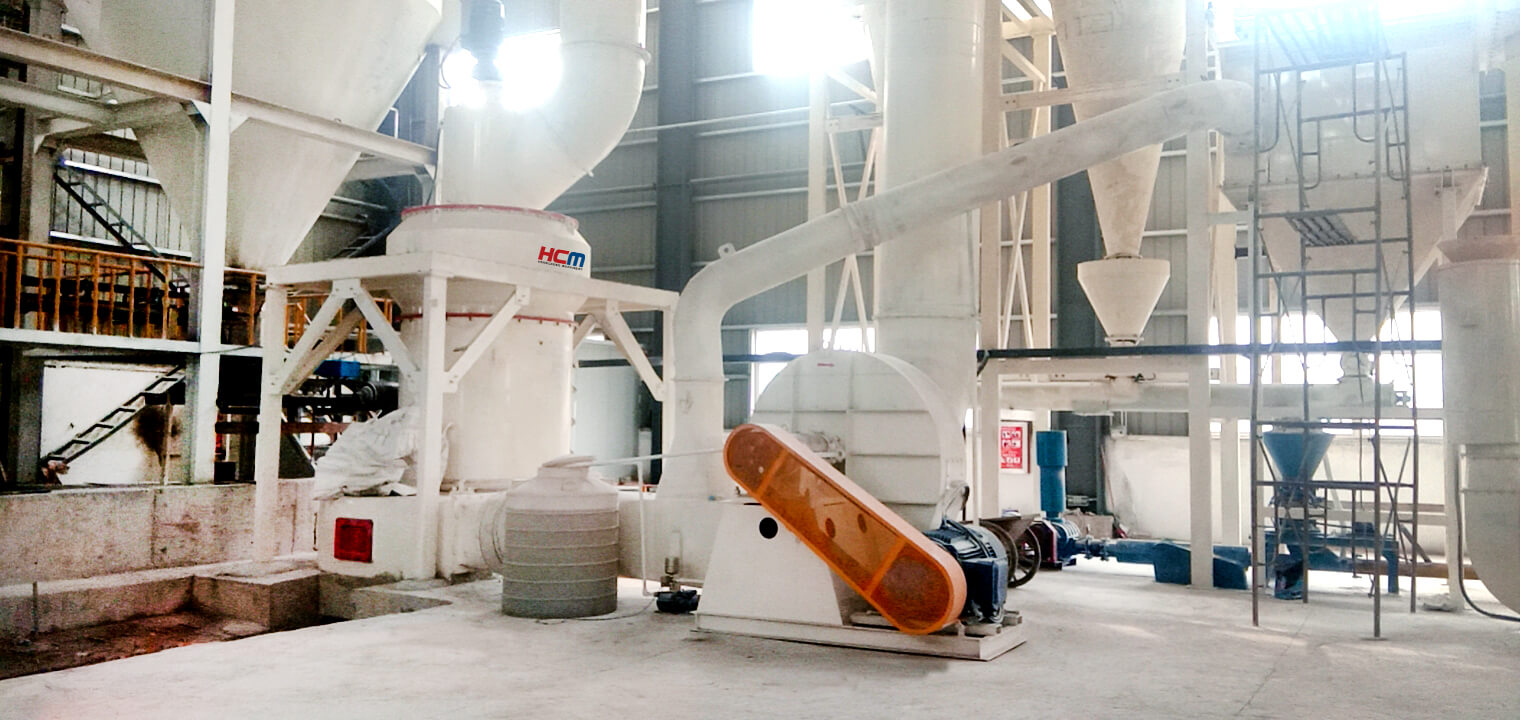Welcome to Guilin HCM Machinery Official WebSite!
Release date: 2023-12-12 11:51:09
Calcium carbonate is an inorganic compound that is the main component of limestone (referred to as limestone) and calcite. Calcium carbonate is divided into two categories: heavy calcium carbonate and light calcium carbonate. Heavy calcium carbonate and light calcium carbonate have different properties due to their different particle sizes, crystal forms, and interface properties. Therefore, activated calcium carbonate, calcium carbonate for papermaking, calcium carbonate for plastics, and nano carbonate are also extended. Calcium, edible calcium carbonate, medicinal calcium carbonate, chemical calcium carbonate, coating calcium carbonate, etc. There are many different varieties and uses of calcium carbonate. As a manufacturer of calcium carbonate processing mills, HCM Machinery produces ring roller mills, vertical mills, Raymond mills and other calcium carbonate processing mills that have been widely used in the domestic and foreign calcium carbonate powder processing markets. Today we will introduce to you Let’s take a look at the calcium carbonate processing and powdering process.

1. Application and market prospects of calcium carbonate fine powder:
At present, calcium carbonate powder has been widely used in papermaking, plastics, plastic films, chemical fibers, rubber, adhesives, sealants, daily chemicals, cosmetics, building materials, coatings, paints, inks, putty, sealing wax, putty, felt packaging, In medicine, food (such as chewing gum, chocolate), and feed.
Calcium carbonate fine powder uses:
1). Increase product volume, reduce costs, and improve processing performance (such as adjusting viscosity, rheological properties, and vulcanization properties)
2). Improve dimensional stability, reinforcement or semi-reinforcement, improve printing performance, improve physical properties (such as heat resistance, matting property, abrasion resistance, flame retardancy, whiteness, gloss), etc.
Ultrafine heavy calcium carbonate powder is widely used and has good market prospects. Moreover, the current production equipment and technological processes of ultrafine calcium carbonate powder are very mature. There are many excellent ultra-fine heavy calcium carbonate powder crushing and grinding equipment manufacturers in China, and each manufacturer has the ability to provide complete ultra-fine heavy calcium carbonate powder complete solutions.
2. Different treatment processes for heavy/light calcium carbonate:
1). Heavy calcium carbonate treatment process
Calcite, limestone, chalk, shells, etc. are transported from the quarry to remove gangue; then the stones are coarsely crushed with a crusher, and then crushed with a calcium carbonate mill to obtain fine limestone powder, and finally crushed with a classifier The powder is ground and classified, and the powder that meets the particle size requirements is packaged and stored in the warehouse, otherwise it is returned to the calcium carbonate grinder for grinding again.
2). Light calcium carbonate fine powder process:
1> Carbonization method: Calculate limestone and other raw materials to generate lime (the main component is calcium oxide) and carbon dioxide, add water to digest the lime to generate lime milk (the main component is calcium hydroxide), and then add carbon dioxide to carbonize the lime milk to generate calcium carbonate precipitation. , and finally the calcium carbonate precipitation is dehydrated, dried and pulverized to obtain light calcium carbonate.
2> Soda ash (Na2CO3) calcium chloride method: Add calcium chloride to the soda ash aqueous solution to generate calcium carbonate precipitation.
3> Caustic soda method: In the process of producing caustic soda (NaOH), light calcium carbonate can be obtained as a by-product. Adding slaked lime to the soda ash aqueous solution can generate calcium carbonate precipitate, and at the same time obtain a caustic soda aqueous solution. Finally, the calcium carbonate precipitate is dehydrated, dried and pulverized to obtain light calcium carbonate.
4> Solvay method: In the process of producing soda ash, light calcium carbonate can be obtained as a by-product. Saturated salt water is carbonized with carbon dioxide after inhaling ammonia gas to obtain heavy alkali (sodium bicarbonate) precipitation and ammonium chloride solution. The production process of light calcium carbonate is mainly divided into the following steps: 1. Limestone calcination 2. Digestion of quicklime 3. Carbonation of lime water 4. Sedimentation and filtration 5. Dry and crush.
3. Equipment used in calcium carbonate processing and powder making
Crusher, mill, packaging machine, elevator, conveying device, etc. Among them, the grinding mill is the main equipment for processing calcium carbonate into powder. Currently, the widely used grinding mills on the market include Raymond mill, vertical mill, ultra-fine vertical mill, ring roller mill and other types. Raymond mill and vertical mill are suitable for processing coarse powder within 325 mesh; ring roller mill is suitable for processing ultrafine powder of 325-1250 mesh; ultrafine vertical mill is suitable for processing ultrafine powder of 600-2500 mesh. The HC series Raymond mill, HLMX series ultra-fine vertical mill, and HCH series ring roller mill produced by HCM Machinery are all popular calcium carbonate processing and powdering equipment on the market. If you have related purchasing needs, please contact us by email address:mkt@hcmilling.com